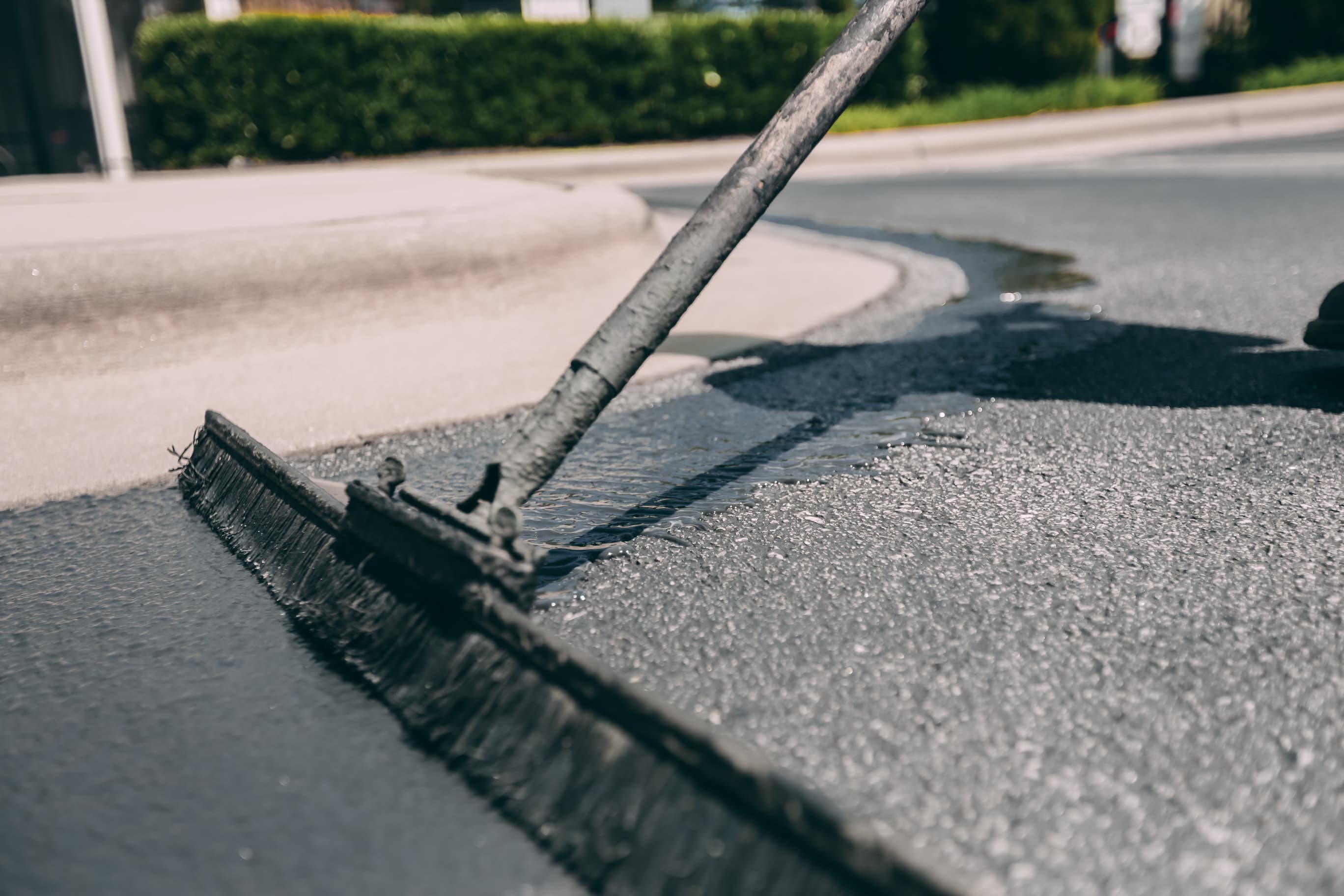Long-lasting Outcomes: Asphalt Patch Repair With Precision Sealing
Cold Mix Asphalt Vs. Hot Mix Asphalt: Which Is Right for You?

Composition Distinctions
Cold mix and hot mix asphalts differ dramatically in their structure, with distinctive characteristics that affect their efficiency and applications. Cold mix asphalt is produced by emulsifying the asphalt binder with water and an emulsifying agent prior to blending it with aggregate. This method permits the asphalt to be practical at lower temperatures, making it excellent for short-term repair services and for usage in colder weather. Warm mix asphalt, on the various other hand, is made at high temperatures, usually in between 300-350 ° F, which aids to achieve better compaction and a much more long lasting final item. The hot mix asphalt production process includes warming the accumulation and asphalt binder separately before integrating them at the asphalt plant.
In addition, cool mix asphalt often tends to be less dense and extra flexible than hot mix asphalt. This flexibility makes it much better suited for locations with higher levels of activity, such as driveways or roadways with hefty traffic. On the other hand, hot mix asphalt is understood for its high resilience and resistance to rutting and cracking, making it a preferred option for highways and high-traffic roads where longevity is crucial.
Setup Refine Differences
The procedure of installing chilly mix and warm mix asphalt exhibits significant differences in their procedures and demands. In comparison, hot mix asphalt requires a much more elaborate installation procedure. Due to the home heating requirements, hot mix asphalt setups are typically carried out by experts with customized tools, guaranteeing a much more structurally sound and permanent result.
Toughness and Long Life Factors
When thinking about asphalt options, resilience and durability are essential elements to review for lasting pavement efficiency. Warm mix asphalt (HMA) is understood for its exceptional durability and long life. The heats throughout the mixing and laying procedure permit better compaction, leading to a denser and stronger pavement framework. This brings about HMA being much more immune to hefty web traffic loads, severe climate condition, and the impacts of aging contrasted to cool mix asphalt (CMA)
In terms of longevity, HMA generally outperforms CMA as a result of its remarkable strength and resistance residential properties. HMA pavements have a longer life span, calling for less constant repair work and maintenance, which can translate to set check over here you back savings in the future. In addition, HMA sidewalks are more conveniently adjustable to fulfill details job needs, even more boosting their toughness.
Expense Considerations
Considering the monetary ramifications is a crucial element when assessing the this option in between hot mix asphalt (HMA) and cool mix asphalt (CMA) for sidewalk tasks. While the first price of warm mix asphalt is typically greater than that of cool mix asphalt, HMA usually gives a much more affordable option in the lengthy run due to its premium toughness and long life.
Along with product expenses, it's vital to think about the expenditures related to installment and upkeep when contrasting HMA and CMA. HMA usually needs specific devices and knowledgeable labor for correct setup, which can impact total job prices. On the other hand, CMA is simpler to collaborate with and can often be applied using less complex methods, potentially decreasing installment expenditures. Eventually, the choice in between HMA and CMA should consider not just the initial price but additionally the lasting monetary implications to establish the most affordable option for the details pavement task.
Environmental Impact Contrast
Contrast of the environmental effects in between hot mix asphalt (HMA) and chilly mix asphalt (CMA) discloses distinct differences in sustainability methods. HMA manufacturing requires high temperature levels, bring about enhanced energy intake and greenhouse gas exhausts. The procedure additionally launches volatile organic compounds (VOCs) and harmful air toxins (HAPs) right into the ambience. In comparison, CMA is generated and used at lower temperature levels, lowering energy usage and emissions substantially. The reduced manufacturing temperature levels of CMA cause decreased fuel consumption and lower levels of CO2 emissions, making it a more ecologically friendly choice.
In addition, the use of CMA frequently entails reusing existing asphalt pavement, advertising resource preservation and decreasing the amount of waste sent out to landfills. By you can check here deciding for CMA over HMA, road building and construction jobs can add positively to ecological conservation initiatives.
Final Thought
To conclude, the choice between cool mix asphalt (CMA) and hot mix asphalt (HMA) depends upon numerous factors such as structure, installment process, toughness, longevity, cost, and ecological influence. angle parking. While CMA uses a cost-efficient and fast remedy for small repair work, HMA makes certain remarkable resilience and longevity for heavy traffic locations. Take into consideration these factors carefully to figure out which kind of asphalt is the appropriate choice for your paving needs

Taking into consideration the financial ramifications is an essential element when evaluating the option in between warm mix asphalt (HMA) and cold mix asphalt (CMA) for pavement tasks. While the initial expense of warm mix asphalt is typically higher than that of chilly mix asphalt, HMA usually offers a much more cost-efficient solution in the long run due to its remarkable durability and longevity. asphalt patch repair.Contrast of the ecological impacts between hot mix asphalt (HMA) and chilly mix asphalt (CMA) exposes distinctive distinctions in sustainability techniques.In conclusion, the option between chilly mix asphalt (CMA) and warm mix asphalt (HMA) depends on numerous variables such as composition, installation process, resilience, durability, expense, and environmental effect